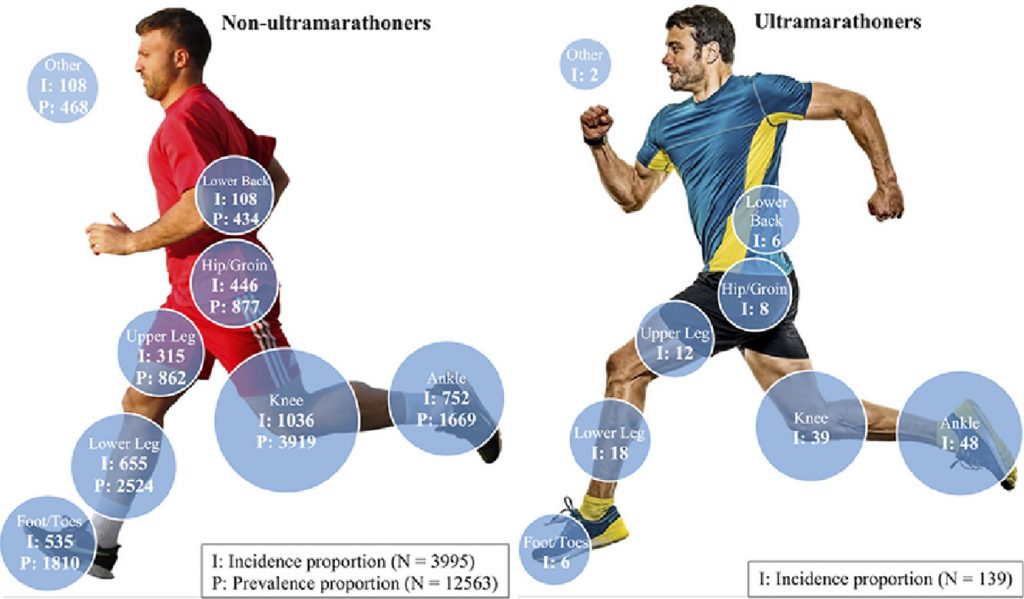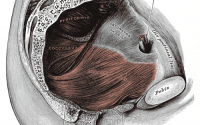Running-related musculoskeletal injuries

Kakouris, et al. 2021. Journal of sport and health science, 10(5), pp.513-522. Creative Common
Running is one of the most popular sport activities with many health benefits. However running-related musculoskeletal injuries are common among runners. The injuries are due to overuse or due to the repetitive cycles of small loads.
A literature review was conducted by researchers from
Loughborough University to determine the incidence and prevalence of injuries in runners by anatomic location and specific pathology.
The authors evaluated the incidence and prevalence of injuries. Incidence is the indication of the number occurrences of new sporting injuries. It provides information about the risk of getting injured and is usually reported in prospective studies. Prevalence indicates how widespread the injury is in the sample population and is usually reported in retrospective studies. Therefore, developing effective injury prevention programs may reduce the injury incidence and, as a result, injury prevalence.
The authors searched the scientific literature regarding running-related injuries. From 1693 articles, they only included 42 articles.
The authors found
- Overall injury incidence was 40.2% ± 18.8%, while and prevalence was 44.6% ± 18.4%.
- Knee, ankle, and lower leg accounted for the highest proportion of injury incidence,
- Knee, lower leg, and foot/toes had the highest proportion of injury prevalence.
- The highest injury incidences are: Achilles tendinopathy (10.3%), medial tibial stress syndrome (9.4%), patellofemoral pain syndrome (6.3%), plantar fasciitis (6.1%), and ankle sprains (5.8%).
- The highest injury prevalence are: patellofemoral pain syndrome (16.7%), medial tibial stress syndrome (9.1%), plantar fasciitis (7.9%), iliotibial band syndrome (7.9%), and Achilles tendinopathy (6.6%)
There was no significant difference in injury incidence proportions by anatomic location between ultramarathoners and non-ultramarathoners. For both ultramarathoners and non-ultramarathoners, the knee and ankle regions had the highest incidence proportion of injuries.
For non-ultramarathoners, the top 5 pathologies with the highest incidence were: Achilles tendinopathy, medial tibial stress syndrome, patellofemoral pain syndrome, plantar fasciitis, and ankle sprain.
For runners who participated in ultramarathon events
- The ankle (34.5%), knee (28.1%), and lower leg (12.9%) were the three most frequently injured sites among ultramarathoners.
- Anterior compartment tendinopathy, patellofemoral pain syndrome and Achilles tendinopathy were the 3 most common injuries.
The authors recommend that injury prevention measures related to the knee (e.g., patellofemoral pain syndrome) and ankle (e.g., Achilles tendinopathy) should be implemented to reduce the high incidence rates.
